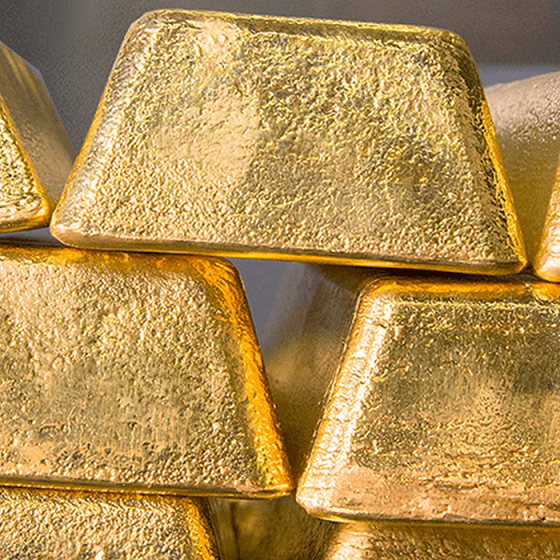The contents of this article are accurate at the time of publishing, are for general information purposes only, and do not constitute investment, legal, tax, pensions or any other advice. Before making any investment or financial decision, you may wish to seek advice from your financial, legal, tax, pensions and/or accounting advisers.
![Web Desktop Hero Banner [1600×800] 22.png](/globalassets/bullion/_new_structure/discover-bullion/guides/low-growth-and-high-inflation/web-desktop-hero-banner-1600800-22.png)
The Bank of England’s Monetary Policy Committee (MPC) voted 7-2 in favour of raising interest rates a further 0.25% last week, following in the footsteps of the European Central Bank and the US Federal Reserve, who both made the same incremental rise earlier this month. This marked the twelfth consecutive rate rise since December 2021, with the UK policy rate now standing at 4.5%. In addition, the Bank of England offered a surprise upgrade to the UK’s growth forecast, modelling output growth as flat over the first half of this year, with 0.9% growth by the middle of 2024 and 0.7% by mid-2025. This perhaps suggests that a further incremental rate increase may be in the offing, and this is currently what the market is pricing in.
Whereas over the pond, the US seems to be at or near a peak in its rate-tightening cycle, in Europe there is still widespread expectation for a further move higher. UK food and energy price inflation, coupled with inflexibilities in the labour force, continue to apply upward pressure to prices here at home, whilst supply chain frictions continue as the UK manoeuvres its new trading terms with the EU. In the year to March, UK food prices rose at the fastest annual rate in 45 years.
Indeed, the latest UK CPI inflation number showed the general level of prices rising 10.1% year on year in March. This reflected a slight decrease from previous months but was still higher than expected, with hopes that it would fall back into single digits. The cost of housing and utilities continued at pace, with rising rents and mortgage payments during the year playing a significant role. In a research briefing in the House of Commons Library[1] it is noted that: ‘Changes to prices that occurred more than a year ago, before March 2022 in this example, ‘drop out’ of the annual inflation rate. Economists expect this effect to lead to the inflation rate generally falling during 2023, as some past price increases drop out of the annual comparison.’
![Article Secondary Image [1000 x 500] 19.jpg](/globalassets/bullion/_new_structure/discover-bullion/guides/low-growth-and-high-inflation/article-secondary-image-1000-x-500-19.jpg)
As global supply chain bottlenecks ease and the fall in wholesale gas prices begins to reflect in household energy bills, the Office for Budget Responsibility (OBR) expects price inflation to slow to 2.9% by the final quarter of 2024. In addition, the Bank of England has an inflation expectation of 4%; whilst this is a marked improvement for UK consumers, it’s still above the 2% target set by the MPC and would likely result in an average real wage decrease for workers over the period. In addition, the UK Energy Bill Support Scheme ended in March, which could lead to elevated energy bills for the average UK consumer[2].
Turning to UK growth, there was a modest 0.1% growth rate in GDP in the first quarter of 2023, compared to the previous quarter. This meant the UK economy narrowly missed a technical recession, defined by two consecutive quarterly negative GDP readings. The current low growth / high inflation environment has historically provided good support for the gold price and has likely played an important role in the gold price – both in dollars and pounds sterling – hovering around all-time highs.
Meanwhile, the Secretary of State for Work and Pensions has reiterated that not only is the state pension age expected to rise to 67 between 2026-2028, but the benchmark retirement age is likely to be voted on in favour of a move to 68 during the next parliament. Following an announcement in March that a proposed rise in the state pension age to 68 will not be brought forward, Mel Stride MP said his successor will have to ‘grasp the nettle’[3] on the issue.
Making the remarks earlier this month, Mr Stride said that the public would be given 10 years’ notice before any change was implemented, allowing retirees and their financial advisors sufficient time to plan accordingly. Mr Stride also said there were ‘currently no plans’ to change the triple lock on raising pensions in the next Conservative manifesto, but stopped short of guaranteeing it would be retained.
Pensions can offer tax-exempt growth in assets and can serve as a vehicle for long term investment decision making. Gold is seen by many as a diversifier when compared to traditional assets, equities and bonds, and is widely considered a ‘safe haven’ asset owing to its performance in times of economic turbulence.
The Royal Mint’s Gold for Pensions offering facilitates the purchase of bullion bars and DigiGold within SIPP and SSAS pensions. To find out more about adding gold to your well-diversified pension portfolio, call our Customer Services team on 0800 032 2152 and ask for one of our account management team to phone back at a time to suit you. Alternatively, please email pmsales@royalmint.com.
References:
[1] Rising cost of living in the UK - House of Commons Library (parliament.uk)
[2] Energy Price Guarantee - GOV.UK (www.gov.uk)
[3] UK will have to raise retirement age after election, minister says | Economic policy | The Guardian




